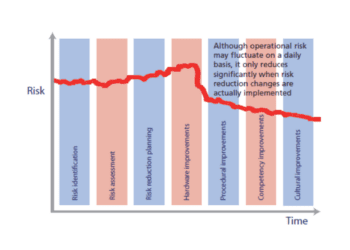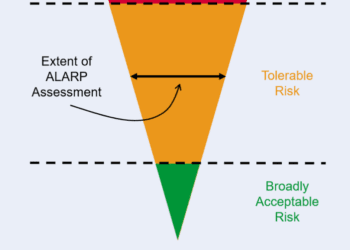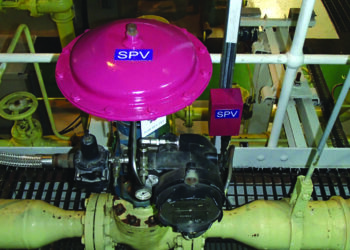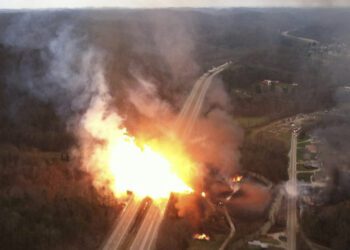The new safety assessment principles
NEW PRINCIPLES FOR A NEW AGE OF NUCLEAR ENERGY
Shortly before Christmas last year the UK’s nuclear safety regulator, the Nuclear Installations Inspectorate, published its new Safety Assessment Principles [Ref 1]. As the benchmark against which NII inspectors assess nuclear safety cases, their revision could influence the future of existing nuclear facilities, which require periodic safety review or decommissioning, as well as the emerging new build programme, which will be expected to follow modern standards. The NII’s view of modern standards is embodied in the new SAPs, so understanding the significance of changes is key to establishing a measured response.
ALL CHANGE?
Superficially, the new SAPs are almost unrecognisable, having been completely restructured and amplified in certain areas. The main material changes (see Table 1) are:
- Consistency with IAEA Safety Standards.
- Expanded principles on decommissioning and waste management.
- New principles for managing safety.
- Tightened and additional numerical criteria.
- Greater applicability to nuclear facilities regulated by the Defence Nuclear Safety Regulator.
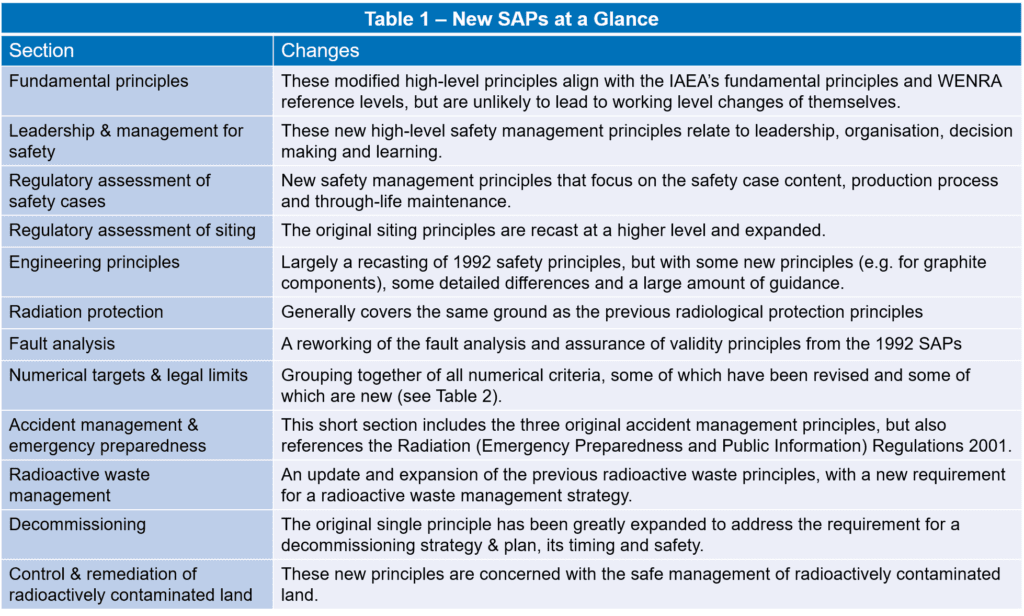
At a seminar for the nuclear industry held on 26th January 2007, the NII explained that the new principles largely reflect a combination of the 1992 edition and the supporting Technical Assessment Guides. Noting that all principles do not apply equally to each facility, the NII particularly emphasised that the level of compliance and supporting analysis should be proportional to the risk.
SAFETY IN NUMBERS
One area where the NII concede there is genuine change is the numerical safety criteria. Except for legal limits, which are explicitly identified, all criteria are now referred to as targets, to be met as far as is reasonably practicable. This includes the BSLs, renamed from Basic Safety Limit to Basic Safety Level. Where previously these represented the limit of tolerability, now they may be exceeded provided there is an extremely robust ALARP assessment in place.
This new flexibility is offset to some extent by changes to criteria. Here, normal dose criteria have been tightened to reflect improved industry practice, and accident criteria have been added to (see Table 2). Potentially the most controversial of these is the new design basis assessment criterion (Target 4), and the new societal risk criterion (Target 9). For lower dose accidents, Target 4 could substantially increase the deterministic analysis effort required, and suggests that greater defence in depth should be considered. For high hazard facilities, Target 9 implies that a Level 3 probabilistic safety assessment may be required, or alternatively, that containment is effective against all credible accidents.
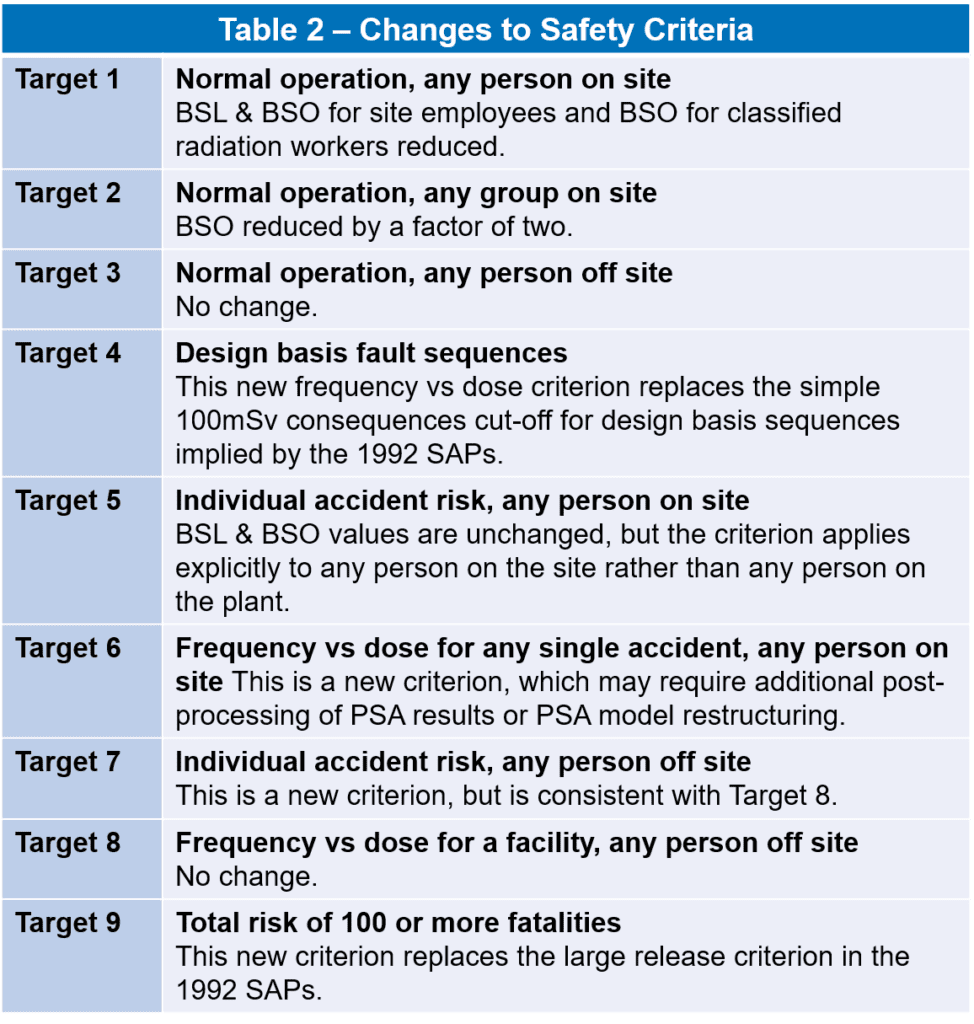
REACTION TIME
At the recent seminar, the NII stressed that, as before, the new SAPs are for its internal use only and have no legal status. However, the NII also stated that the new SAPs are being used for all future assessment with immediate effect. It would clearly be prudent, therefore, for existing and potential Licensees (and eventually Authorisees) to undertake a critical review of the new SAPs against their own safety assessment principles.
Deviation from the new SAPs does not necessarily imply a requirement for huge amounts of additional safety justification, however. In many cases, existing arrangements may be acceptable, or simply need augmenting, for example by increasing the degree of ALARP justification. In other instances, alternative approaches or criteria can be justified quite legitimately. In all cases it is advisable to notify and, if necessary, engage the NII before committing resources to safety assessment that could be rejected or superfluous.
FIELD TESTING
The NII has openly admitted that there have been no trials to establish the potential impact of the new SAPs and their new numerical targets, maintaining that they represent minimal change. Ultimately, their reasonableness will be tested on real safety cases, perhaps even for future nuclear power stations in the UK.
Ref 1 – HSE, Safety Assessment Principles for Nuclear Facilities, 2006.
This article first appeared in RISKworld Issue 11.

